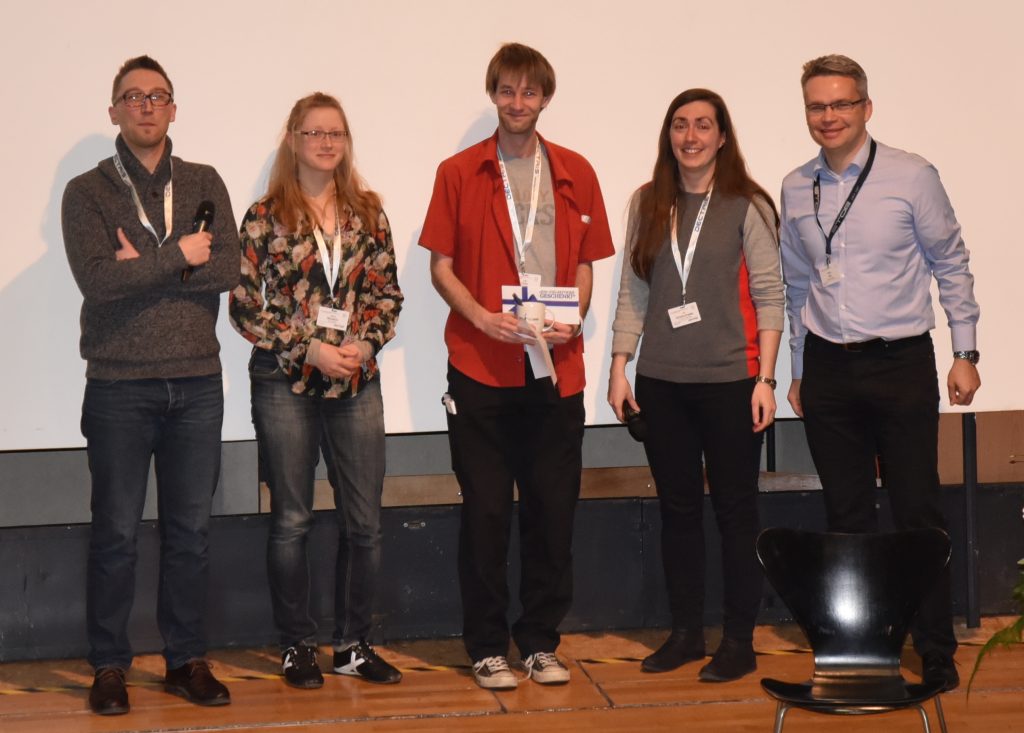By Melanie Nentwich
During the annual DGK meeting in Stuttgart 2016, the Young Crystallographers hold their lightning session and a poster session. A small committee of established scientists selected the three best posters. One of these winners is Gregor Hofer, besides Manuela Goregel and Sandrina Meis.
Gregor started his studies in Geology at the University of Vienna in 2009. There, he specialized in high-pressure crystallography within the department of Mineralogy and Crystallography. He finished his master thesis „Compressibility and High-Pressure Behaviour of Spodumene-Type LiScGe2O6“ in the Miletich group by the end of 2014. Next to studying, he worked part time in the crystallographic service center at the Vienna University of Technology. In 2015, he started his PhD project at ETH Zurich, which is a joint venture from the X-ray Platform D-MATL and the Laboratory of Polymer Chemistry. For the presentation of his first results at the Stoe LabMeeting in Darmstadt 2015 he was one of the lucky winners of the Poster Prize. He is a member of the Young Crystallographers since 2015 and he is managing the Blog of the Young Crystallographers since 2015.
Can you tell us a little bit about the topic of your poster?
On my poster, I have presented my most recent findings on the two-dimensional polymer I am working with. I focused on three important observations. First, there is a change in disorder of the incorporated solvent molecule which is accompanyied by an overall change of the electric dipole momentum. Second, I showed some Monte Carlo simulations of the reaction kinetics and compared them with my experimental findings. Last, I presented some preliminary results from my diffuse X-ray scattering experiments togehter with some qualitative interpretation of the visible diffuse scattering features.
What fascinates you about polymers?
To be honest, my personal fascination about my research project is not about the polymer. It has a nice and beautiful crystal structure, but I am much more interested into the diffuse X-ray scattering method I am employing. I find it fascinating that diffuse scattering features in diffraction patterns are known since the beginning of X-ray diffraction but that only recently, because of technological advancement, scientists were able to get some quantitative information out of it. Also, because of its novelty, I can contribute to and observe the growth of a potentially powerful method.
What was the biggest challenge during your research, so far?
It probably was getting a better understanding of statistics and a wholesome understanding of the reciprocal space. Reciprocal space is still a mind screw for me but one that I enjoy.
What was your favourite part of the conference?
It was definitely the talk on mechano-chemistry by Tomislav Friscic. It was highly interesting and it was very impressive to see, what is possible to achive by „smacking two things together“. His talk also inspired me to try out some mechano-chemistry experiments on my own.
From left to right: Oliver Pecher, Melanie Nentwich, Gregor Hofer, Julia Dshemuchadse, Martin Fark
Picture by Frank Adams, Stuttgart University
